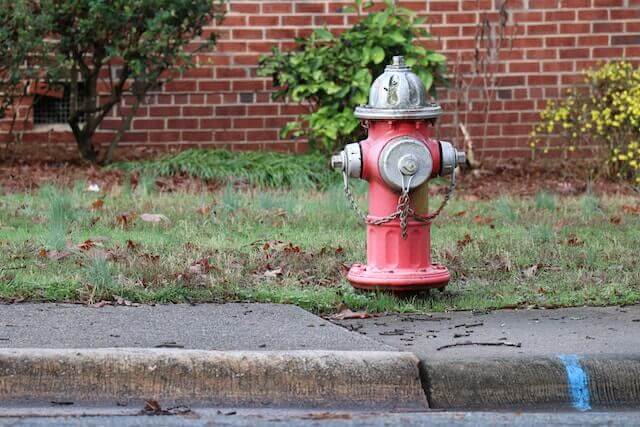Fire hydrants are a common sight in most neighborhoods, and their importance cannot be overstated. They provide a quick and reliable source of water for firefighters in case of a fire emergency. However, many homeowners wonder if having a fire hydrant on their property can lower their insurance rates. The answer to this question is not a straightforward one, as it depends on various factors.
Insurance companies consider several factors when determining the premiums for homeowners’ insurance policies. These factors include the location of the property, the age of the property, the construction materials used, and the proximity of the property to emergency services such as fire stations and hydrants. Therefore, having a fire hydrant on your property can potentially lower your insurance rates, as it indicates that your property is located in an area with quick access to emergency services.
Table of Contents
Understanding Fire Hydrants and Insurance
Fire hydrants are an essential part of a community’s fire protection infrastructure. They are strategically placed throughout cities and towns to ensure that firefighters have quick and easy access to water in the event of a fire. But do fire hydrants have any impact on insurance rates?
The answer is yes, but the impact varies depending on several factors. Insurance companies use a variety of factors to determine rates, including the location of the property, the age of the property, and the distance to the nearest fire hydrant and fire station.
Properties that are located near fire hydrants and fire stations are generally considered to be less risky, and therefore may qualify for lower insurance rates. This is because firefighters can quickly access water and respond to fires, which can help to minimize damage and reduce the risk of total loss.
On the other hand, properties that are located in areas without easy access to fire hydrants and fire stations may be considered higher risk and may therefore be subject to higher insurance rates. This is because firefighters may have to travel further to reach the property and may have a harder time accessing water, which can increase the risk of damage and total loss.
It’s important to note that the impact of fire hydrants on insurance rates is just one of many factors that insurance companies consider when determining rates. Other factors, such as the age of the property, the type of construction, and the presence of safety features like smoke detectors and sprinkler systems, can also play a role in determining rates.
In summary, fire hydrants can have an impact on insurance rates, but the impact varies depending on several factors. Properties that are located near fire hydrants and fire stations may qualify for lower rates, while properties located in areas without easy access to fire protection infrastructure may be subject to higher rates.
Impact of Fire Hydrants on Home Insurance Rates
Proximity to Fire Hydrants
The proximity of a home to a fire hydrant is a significant factor in determining home insurance rates. Insurance companies consider homes located near fire hydrants to be less risky than those that are not. This is because in the event of a fire, firefighters can access water from the hydrant quickly, which can help to prevent or minimize the damage caused by the fire.
Insurance companies may offer lower rates to homes that are within a certain distance from a fire hydrant. The exact distance varies by insurer, but typically, homes that are within 500 feet of a fire hydrant are considered to be in a good position to receive lower rates.
Fire Hydrant Maintenance
The maintenance of fire hydrants is also a factor in determining home insurance rates. Insurance companies want to ensure that fire hydrants are in good working order and can provide an adequate supply of water in the event of a fire.
If a fire hydrant is damaged or not functioning properly, it can delay the response time of firefighters and increase the risk of damage to a home. Insurance companies may conduct inspections to ensure that fire hydrants in the area are well-maintained and in good working order.
In conclusion, the proximity of a home to a fire hydrant and the maintenance of fire hydrants in the area can impact home insurance rates. Homeowners who live near well-maintained fire hydrants may be eligible for lower insurance rates, while those who live far from fire hydrants or in areas with poorly maintained hydrants may face higher rates.
Fire Hydrants and Commercial Insurance
Impact on Business Insurance Rates
Fire hydrants can have an impact on commercial insurance rates. Insurance companies consider fire hydrants as a factor when determining insurance rates for businesses. The distance between a business and the nearest fire hydrant is one of the factors that insurance companies consider when determining the risk of fire damage to the business.
Businesses located near fire hydrants are considered to be at a lower risk of fire damage and may receive lower insurance rates. On the other hand, businesses located far from fire hydrants may be considered to be at a higher risk of fire damage and may receive higher insurance rates.
Safety Regulations and Compliance
Fire hydrants are also important for safety regulations and compliance. Local regulations require that fire hydrants be installed and maintained in good working condition. Businesses that fail to comply with these regulations may face fines or other penalties.
In addition, insurance companies may require that businesses comply with safety regulations and maintain fire hydrants in good working condition to qualify for lower insurance rates. Regular inspections and maintenance of fire hydrants can help businesses comply with safety regulations and maintain lower insurance rates.
Overall, fire hydrants can have an impact on commercial insurance rates and safety regulations. Businesses located near fire hydrants may receive lower insurance rates and comply with safety regulations. Regular inspections and maintenance of fire hydrants can help businesses maintain compliance with safety regulations and lower insurance rates.
How to Lower Insurance Rates with Fire Hydrants
Installing fire hydrants can help lower insurance rates for homeowners and businesses. Insurance companies consider a variety of factors when determining premiums, and having access to a nearby fire hydrant is one of them. Here are a few ways to lower insurance rates with fire hydrants:
- Check with your local fire department to ensure there are enough fire hydrants in your area. Insurance companies may require a certain number of hydrants within a certain distance of your property in order to offer lower rates.
- Install a fire hydrant on your property if there isn’t one nearby. This can be costly, but it may be worth it in the long run, as it can significantly lower insurance rates.
- Make sure the fire hydrant on your property is easily accessible. Insurance companies may require that the hydrant be located within a certain distance from your property and that it be visible and unobstructed.
- Keep the fire hydrant in good condition. Regular maintenance and inspections can help ensure that the hydrant is functioning properly in case of an emergency.
It’s important to note that while having access to a fire hydrant can help lower insurance rates, it’s not the only factor that insurance companies consider. Other factors, such as the age and condition of the property, the type of construction, and the presence of smoke detectors and sprinkler systems, also play a role in determining insurance rates.
Conclusion
In conclusion, while fire hydrants play an important role in fire protection, their presence alone does not necessarily lower insurance rates. Insurance companies consider a variety of factors when determining premiums, including the location of the property, the type of building, and the fire safety measures in place.
It is true that having a fire hydrant nearby can help firefighters respond more quickly to a fire, which could potentially reduce damage and lower insurance claims. However, this is just one piece of the puzzle. Insurance companies also look at other factors, such as the distance to the nearest fire station and the quality of the local fire department.
Ultimately, it is important for property owners to take all necessary fire safety precautions, regardless of whether or not there is a fire hydrant nearby. This includes installing smoke detectors, fire extinguishers, and sprinkler systems, as well as having an evacuation plan in place. By taking these steps, property owners can help protect their property and potentially lower their insurance premiums.







